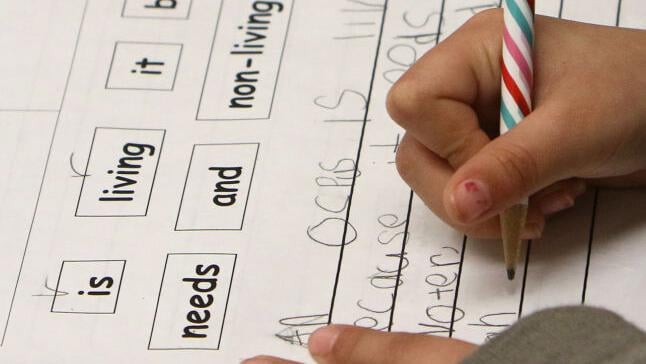More than two-thirds of the school districts in Arizona spent a smaller percentage of their available dollars on classroom instruction in the last school year than the year before, according to a new report.
And overall spending on instruction, on average, is the lowest percentage since the Auditor General’s Office began monitoring in 2004.
Data from that office found that in total dollars, versus percentages, overall spending on instruction among all districts in the state increased by more than $341.4 million. Overall spending hit nearly $12.6 billion, up by nearly $1 billion, much of that likely due to continued COVID-19 relief funds.
But while there was more money in the system, the report says just 53.4 cents of every dollar was spent in the instruction category. It covers everything from teachers and aides to instructional supplies, field trips and athletics.
That is down 1.1 percentage points on a statewide basis from the prior school year.
Auditor General Lindsey Perry said multiple larger, urban districts reported they had to spend more of every dollar they were getting on student and instructional support services. Examples cited included counselors and instructional coaches as well as having to use more expensive contractors to fill support service needs for special education students.
Perry also said multiple districts of varying sizes said they made large investments in instructional materials the prior year — spending that counts toward instructional dollars — but did not have similar purchases this past year.
Rural districts reported they lost tenured teachers who were replaced with lower-paid staff, she said.
“However, FY 2023 was the second year in a row that most districts’ and the statewide instructional spending percentage decreased, indicating the potential start of a trend of districts allocating more of their available resources to operational areas other than instruction,’’ Perry wrote.
Teacher pay
The annual report has played a role in the perennial debates at the Legislature about whether the money allocated gets into the classroom.
This year’s comes as lawmakers are debating competing plans designed to use proceeds from the state land trust to increase teacher pay.
The plan backed by Republican legislators earmarks all of the proceeds to teacher pay, arguing that is the greatest need. But Gov. Katie Hobbs and fellow Democrats are backing a different plan, with more money, that also would raise salaries of support staff, from counselors and coaches to bus drivers and cafeteria help.
One important note is the 53.4% figure for spending on instruction does not represent everything devoted to services provided to students.
Student support, the costs of counselors, audiologists, speech pathologists, nurses, social workers and attendance services ate up another 9.5 cents of every dollar. Add to that another 6.2 cents for instruction support, which includes librarians, teacher training, curriculum development, special education directors, media specialists and instruction-related technology services.
That gets to 69.1 cents on each dollar.
Of the balance, the largest share — 11.6 cents of each dollar — is for utilities, building maintenance, grounds keeping and security.
There’s another 10.3% for administration, starting with the school superintendent and principals, along with business managers, clerical and accounting staff and human resources.
That leaves 4.5 cents for food services and 4.5 cents for maintaining and operating the buses to get students to and from school and activities.
On the question of teacher pay, the report contains data showing average teacher pay in Arizona hit $62,934 last school year. That is the equivalent, on average, of a 30% increase since the 2016-2017 school year, some of that fueled by federal COVID relief dollars.
The word “average’’ is significant: More than one out of every five districts saw a decrease in average year-over-year teacher salaries.
The report says those districts, along with others that gave relatively small raises, may have used the money they received, intended for teacher salary increases, for other purposes.
But it also cites the issue of teacher experience.
“Most districts that had a decrease in average teacher salary also employed, on average, less-experienced teachers than the prior fiscal year,’’ teachers who are paid less, it says.
Nearly one out of every five teachers has been on the job for three years or less, with an average salary statewide of $47,952.
Still, on a statewide basis, the average years of teacher experience increased a tenth of a point to 11.9 years. But there also was an increase in the average number of students per teacher, up from 17.2 the prior year to 17.7.
The report also looked at operational efficiencies.
Overall, the number of students per administrative position stayed pretty much the same. But the spending per student went from $1,088 in the 2021-2022 school year to $1,207 last year.
Food service costs are up to $4.12 per student this past year versus $3.25 the year before. But the number of meals served decreased.
The report says this was likely due to a waiver from the federal government, which expired last school year, that allowed school districts to serve free meals to all students regardless of household income and receive a fixed-rate federal reimbursement per meal. That expiration, the report says, led to decreased participation in their food service programs, resulting in fewer meals served.
Get your morning recap of today's local news and read the full stories here: tucne.ws/morning





